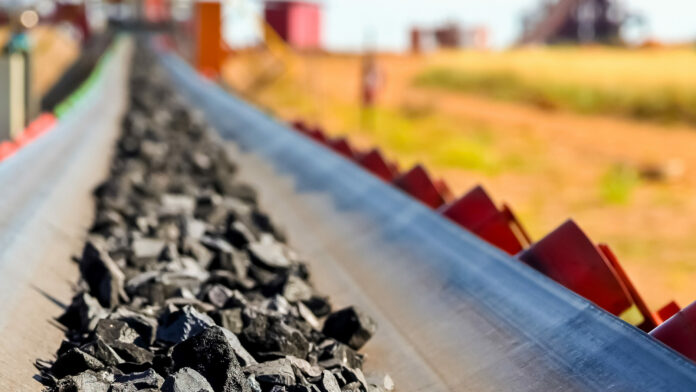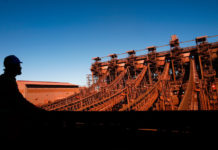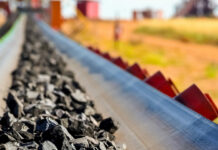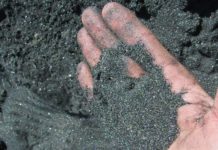
ASK any mining executive involved in the manganese industry about the metal’s prospects in electric vehicle batteries (BEVs) and you’ll likely get some hemming and hawing. The way Brad Rogers, MD of Australia’s Jupiter Mines describes it, building an investment case for manganese in BEVs involves “making one hypothetical assumption upon another hypothetical assumption … We are looking for a market that doesn’t exist and changes all the time.”
Chemistry has long found a role for manganese in a number of different lithium-ion battery technologies for electric vehicles, but the difficulty is anticipating and responding to the technology that automakers will eventually choose.
Then there are some fundamental aspects of the manganese market that miners also consider. In order to supply the BEV market, manganese ore needs to be transformed into a beneficiated product called high-purity manganese sulphate. However, production of this grade of manganese is controlled by China. It is just one of the critical metals in which the Communist Party has a stolen a march on the West.
China accounts for roughly 96% of all manganese sulphate production, says Mark Beveridge, principal consultant for Benchmark Mineral Intelligence, a company that tracks the critical metals market. Western markets also lack a baseline technology with which to start production, unlike China.
In addition, high-purity manganese sulphate is not a major piece of the production pie for BEVs, comprising only 1% of the BEV production cost. “This is why manganese isn’t spoken about in quite the same way as the market talks about cobalt, nickel and lithium,” says Beveridge.
While automakers are thought to be watchful of long-term lithium supply, there isn’t quite the same level of anxiety in sourcing tomorrow’s manganese. That’s partly because it’s so abundant as an ore. The Tshipi manganese mine in South Africa’s Northern Cape contains about 100 years of mine life at current production levels. Undeveloped mines in its vicinity are similarly long life. Given these twin factors – of resource abundance and the dominance of the Chinese in the downstream market – success will turn on sizing up market conditions correctly.
“Our technical work and our hypothesis is that the winners will not be those with the coolest flowsheet,” says Rogers, whose Jupiter Mines is a 49.9% shareholder in Tshipi mine. “We will be looking for price signals, scale and scaling. These are important from a commercial and production perspective if you think there will be a premium to Chinese prices.”
There may well be a premium. The US Inflation Reduction Act demands that for a BEV to be tax-credit eligible, about 80% of the market value of critical metals in its battery have to be produced either in the US or from “US free-trade partners”. That means there’s opportunity in securing some market share from China.
From a demand perspective, what is expected of the high-purity manganese sulphate market is that it will be fast growing, as one would expect from such a low (and concentrated) base of production. Even the most conservative estimates suggest current Chinese supply will be insufficient, says Beveridge.
Completing this somewhat complex picture is the caveat that despite this potential for growth, manganese sulphate demand may only comprise 6% to 10% of the total demand. Says Rogers: “From an investment perspective, we have to be convinced on a number of things that are short on facts right now. We have to do long-term planning for a supply deficit that will be there in the late 2020s, but which will still be quite small for a single plant, let alone a number of plants.”
AT present, ferroalloys production is pretty much all there is to total manganese demand where it is used as a hardening agent. It’s about 91% of the total market. Therefore, manganese producers have to find other ways of exploiting the market. This is where the scale aspect of Rogers’ comments is important because one company that has scalability is African Rainbow Minerals (ARM). The Johannesburg-listed diversified mining group operates the Nchwaning, Gloria and Cato Ridge mines, from which it produces 3.6 million tons annually of manganese ore and has capacity for 400,000 tons a year of ferromanganese.
“We are actually very bullish on the manganese price, which is why, six or seven years ago, a team of propellor-heads worked on a plan so we could recapitalise the mines and benefit from growth,” says the CEO of ARM’s ferrous division, André Joubert. New technology, due to be announced in the new year, will enable the company to sell low-value ‘fines’ manganese that is currently put into tailings stockpiles. (Miners attract a better price for so-called ‘lumpy’ manganese).
Joubert says by using low-energy processing, a by-product slag can also be beneficiated into a battery-grade sulphate, leaving behind a gypsum ‘waste’ that can be sold to the construction industry. The new processes will see the company producing four to five million tons of manganese annually, depending on total demand, and making full use of the value chain.
Joubert is something of an electric mobility optimist: he told the London Indaba conference in June he’d been an early adopter of electric mobility and had been driving an EV since 2016, which he charges from his home using solar energy. Another logistical deficit in South Africa is the lack of rail capacity growth; in fact, available capacity has been shrinking in the country’s manganese sector owing to Transnet’s new black economic empowerment rules and a decline in its efficiencies. According to Rogers, this is partly because there’s been a fourteenfold increase in manganese production as a result of successful ‘use it or lose it’ legislation in South Africa’s minerals ownership dispensation.
There are nine manganese producers in South Africa backed by 14 major companies. Tshipi, at about 3.3Mt in annual production, is the second largest and is owned in joint venture with Sakkie Macozoma’s Safika via its investment in Ntsimbintle Mining. There has been speculation the two companies could trigger consolidation in the sector. Consolidation would provide a more rational use of rail network, which comprises about 35% of Tshipi’s production, says Rogers. Mining comprises 5% of total production costs.
But he is reticent to comment on how these consolidation plans might roll out, saying only: “Our shareholders want us to continue paying a dividend (13% dividend yield last year), but we think we can do better. We want to sensibly grow production. We have more installed capacity at Tshipi than we’re using.”










